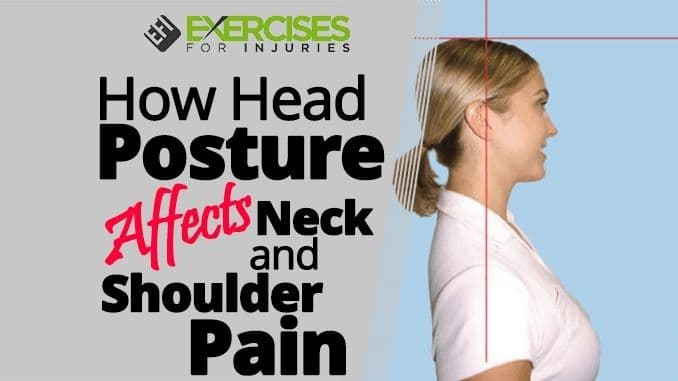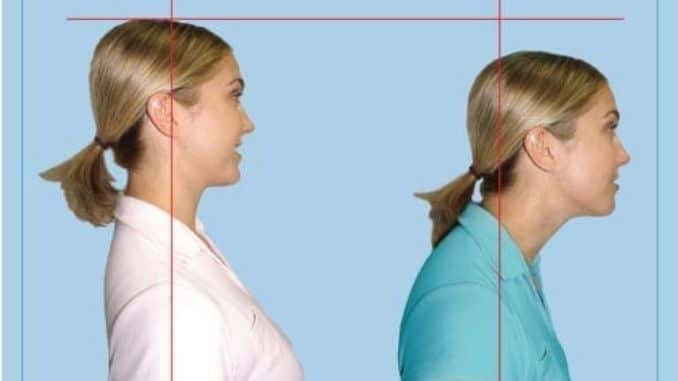
Poor posture is the number one cause of neck pain. It can occur from spending too much time sitting at a desk or in front of a computer. Poor posture can also result from other conditions, including scoliosis, arthritis, and spondylosis.
One of the most common causes of poor posture is Forward Head Posture, and many people have experienced its discomforting effects in their daily lives. However, do we know what it is? Are we sure that we know how to correct it? What are the possible causes of this posture? Can time fix it, or does it need immediate treatment? Understanding and correcting poor posture is often enough to relieve the pain. If not, it may be necessary to see a physician for further treatment.
If you have a head forward posture, you will activate or work your upper and lower trapezius muscles. Those muscles are overworking and more likely to lead to neck pain. The head forward posture turns off the serratus anterior, a major muscle in the scapula. These stabilizing muscles are crucial for activating and strengthening when preventing shoulder injuries. This article will give you some basic information on identifying and correcting poor posture.
Forward Head Posture
Forward head posture is a consistently poor neck posture that often co-exists with the upper crossed syndrome. Hyperextension of the upper cervical vertebrae (the upper neck) defines this. And a forward translation of the Cervical Vertebrae. In addition to forwarding head posture, poor posture also includes thoracic kyphosis. The upper/mid-back is rounded forward, and the shoulders are slumped forward. Over time, this posture can shorten the muscles on the back of the neck, which can be painful. The cervical vertebrae can also become compressed. The constant compressive forces in the neck and the increases in muscle tension generally lead to pain. Forward head posture can present as headaches, neck discomfort, muscle tension in the neck and shoulders, mid-back discomfort, chest pain, pain, pins, and needs, or even numb arms and hands.
Many people with the symptoms of forwarding head posture will receive treatment for the pain. Such as painkillers or anti-inflammatory medications. But will never treat the underlying cause. Without treating the imbalances in the body, you cannot reverse forward head posture or the associated pain. If you have head pain, look at how your head is aligned. Position your head with good alignment with your shoulder, back, and the rest of your body as it decreases neck and shoulder pain.
Three Ways To Relieve Neck Pain
Forward head posture can lead to many problems, including neck pain, muscle overload, and a hunched upper back. Over time, you can correct your forward head posture by practicing these simple habits every day.
1. Start Your Day with Chest Stretches
If you have tight chest muscles, your head can move forward. Your shoulders and head may have an easier time staying pulled back if you stretch out your pectoralis major and minor. You can stand in a doorway or face a corner of a room. Place your forearms against each wall or door with your elbow slightly below shoulder level. Lean forward until you feel a stretch in your chest under your collarbone. Hold for up to a minute.
2. Arrange Your Workplace Ergonomically
Sitting at your desk all day, your head tends to be slightly hunched forward. Arrange your workstation ergonomically to encourage you to keep your head aligned over your shoulders. The position of your desk, computer monitor, and keyboard can be adjusted to help keep your head and neck aligned.
When using your keyboard and mouse, ensure your forearms are parallel to the floor and your elbow is bent 90 degrees. You can keep the back of your head flush against the chair if you buy an office chair with a headrest.
3. Sleep On A Cervical Pillow
A cervical pillow (Orthopedic pillow) is a specially designed pillow that prevents your neck from rolling forward while you sleep. The goal of the design is to keep your neck neutral instead of flexing forward. You can achieve a similar effect by sleeping on your back with a rolled towel under your neck instead of a pillow.
CLICK HERE to watch the YouTube video.
Outlook
Having a neutral posture, with your head back and head in good alignment with your shoulders and rest of your body leads to a decrease in the activation of your upper trapezius and lower trapezius, as well as greater activation in your serratus anterior, which is the key muscle to prevent shoulder pain.
You won’t correct forward head posture overnight. Commit to these tips and see if you notice an improvement over the weeks and months ahead. If your forward head posture is severe or causes pain, consult a physical therapist who can provide more guidance and options to help improve posture.
If you are looking for a resource to help you end your neck and shoulder pain for good, click here to check out the Neck Pain Solved program.


